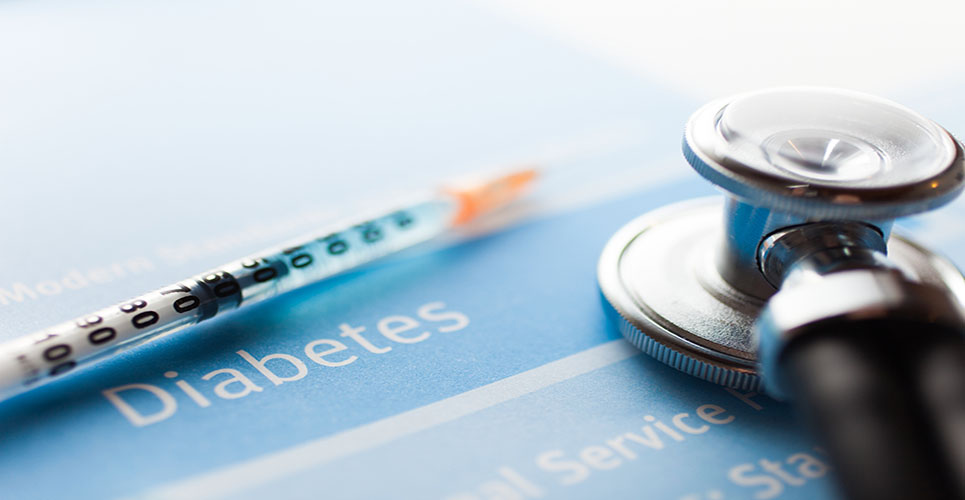Diabetes Care has published phase IIIa findings that demonstrate a significantly greater glucose-lowering effect with IDegLira (insulin degludec/liraglutide; Xultophy®) compared with insulin degludec.
People on IDegLira also experienced a low rate of hypoglycaemia, comparable with insulin degludec, and achieved a reduction in body weight when compared with treatment with basal insulin alone.(1)
Diabetes Care has published phase IIIa findings that demonstrate a significantly greater glucose-lowering effect with IDegLira (insulin degludec/liraglutide; Xultophy®) compared with insulin degludec.
People on IDegLira also experienced a low rate of hypoglycaemia, comparable with insulin degludec, and achieved a reduction in body weight when compared with treatment with basal insulin alone.(1)
The data are from the DUal Action of Liraglutide and insulin degludec in type 2 diabetes (DUAL™ II) trial investigating IDegLira, the first once-daily basal insulin (insulin degludec, Tresiba®)(2) and glucagon-like peptide 1 receptor (GLP1R) agonist (liraglutide, Victoza®)(3)in one pen.
IDegLira demonstrated a mean glycated haemoglobin (HbA1c) reduction of 1.9% from baseline versus 0.9% with insulin degludec. Sixty percent of people treated with IDegLira achieved the HbA1c goal of less than 53mmol/mol (˂ 7.0%) compared with 23% treated with insulin degludec (p<0.0001). People treated with IDegLira had a significant mean weight loss of 2.7 kg from baseline compared with no change with insulin degludec (p<0.0001). Forty percent of the people treated with IDegLira, achieved the HbA1c goal with no confirmed hypoglycaemic episodes and with no weight gain compared with 8.5% of people treated with insulin degludec (p<0.0001).(1)
Commenting on the publication, Professor Anthony Barnett, Emeritus Professor of Medicine and Consultant Physician at the University of Birmingham and Heart of England NHS Foundation Trust, said: “Type 2 diabetes is a progressive disease which is associated with a significant personal and societal burden. Blood glucose control is critical in helping reduce the risk of long term diabetes complications which cause considerable morbidity and mortality and cost the NHS billions of pounds per annum. Any treatment that can help people with diabetes reach their glycaemic targets, while limiting side effects (particularly weight gain and hypoglycaemia), will be an important weapon in the fight against this complex condition.”
Control of HbA1c is a crucial target in diabetes management. In the UK, the Quality and Outcomes Framework has set the HbA1c target as ≤7.5%.(4) Nearly three-quarters of people with type 2 diabetes on basal insulin regimens, in the UK, fail to reach less than 58mmol/mol HbA1c (≤7.5%) and are therefore at a greater risk of complications.(5–8) A one percentage point drop in HbA1c can lead to a 37% reduction in microvascular complications, a 14% reduction in myocardial infarctions and a 21% reduction in overall diabetes-related mortality.(7)
Gwen Hall, Diabetes Specialist Nurse, Portsmouth Community Diabetes Service, noted: “Intensifying basal insulin regimens comes with additional risks for people with type 2 diabetes in terms of hypoglycaemia, weight gain and a potential increase in the number of daily injections they have to take. Similar concerns for health professionals may delay treatment intensification. The adverse effect on individual’s wellbeing, and the complexity of managing the increased insulin regimen and side effects, can be a major barrier to adherence to the treatment plan. The DUAL II™ findings suggest that IDegLira could simplify that treatment regimen while improving blood glucose levels without increasing the risks of side effects.”
There were no apparent differences between the treatment groups with respect to adverse events, and standard safety parameters during the trial.(1)
References
- Buse J et al. The fixed ratio combination of insulin degludec and liraglutide in a randomised controlled trial: a novel alternative to basal insulin in the management of type 2 diabetes. Diabetes Care August 2014.
- Tresiba® Summary of Product Characteristics (SPC). Bagsværd, Denmark, Novo Nordisk A/S; 2014.
- Victoza® Summary of Product Characteristics (SPC). Bagsværd, Denmark, Novo Nordisk A/S; 2014.
- doctors.net.uk. Diabetes NICE Clinical Guidelines 2012:Locally Adapted Guidelines http://www.doctors.net.uk/_datastore/ecme/mod1101/Diabetes_NICE_clinical_guidelines_v02.pdf (accessed 7 August 2014).
- Novo Nordisk data on file.
- International Diabetes Federation. Diabetes Atlas 2013. Available at: http://www.idf.org/diabetesatlas (accessed 15 July 2014).
- Stratton I et al. Association of glycaemia with macrovascular and microvascular complications of type 2 diabetes (UKPDS 35): prospective observational study. BMJ 2000;321(7258):405–12.
- Bethel M, Feinglos M. Basal insulin therapy in type 2 diabetes. J Am Board Fam Med 2005;18(3):199–204.

